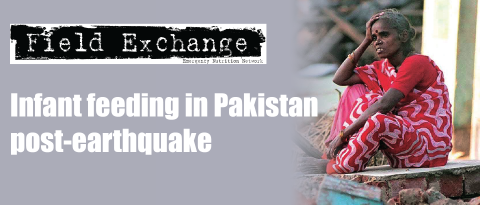Interpreting mortality data in emergencies
The Humanitarian Practice Network (HPN) have published a network paper on 'interpreting and using mortality data in humanitarian emergencies - a primer for non-epidemiologists'. The paper has chapters on applications of mortality data, overview of methods to measure mortality (including retrospective surveys, prospective surveillance and rapid convenience surveys), interpreting and using mortality data (point estimates and confidence intervals, interpolation, extrapolation and stratification, missing populations understanding causation, distal versus proximate determinants of mortality) and the politics of mortality.
The conclusion section of the paper raises a number of critical issues. In response to the reported 'statistical anarchy' in Darfur with regard to mortality estimates, the authors argue that preventing the collection and dissemination of objective data on the plight of a conflict affected population, or manipulating existing figures, are stratagems through which belligerents try to forestall public scrutiny of their actions and intent. Further assertion is that even where there is reasonably good access, resources for surveys are sometimes allocated inadequately and too late. Mechanisms should thus urgently be put in place to;
- establish the magnitude of an emergency from the outset
- implement mortality surveillance systems and/or regular monitoring surveys, and
- where humanitarian assistance arrives too late, document the past health impact of any crisis.
It is also recommended that well planned, sufficiently sampled surveys, covering the entire population affected by crisis, will remove the need for risky extrapolation of scarce, sitespecific mortality findings. A region-wide comprehensive survey will rarely cost 1% of a relief budget.In the past, the United Nations (UN) has largely not fulfilled the role of carrying out mortality surveys. Non-governmental organisations (NGOs) and academic centres have partly filled the gap. Recently, the World Health Organisation (WHO) successfully led regionwide mortality assessments in both Darfur and northern Uganda. However, direct UN involvement may not always be possible, especially if the survey objectives include documenting past violence and abuses. Typically, this may be due to stringent security rules or the vital need to maintain relations with belligerent parties. It is argued that in such cases, the UN should actively support and empower an impartial, reputable agency or academic institution to collect mortality data.
Standardisation of methods is probably the best guarantee against biased, imprecise and otherwise contestable results, especially if more agencies become involved in the collection of mortality data. The paper attempts to set out core requirements of any mortality data collection, such as proper training of home visitors, regular updating of population figures and adequate sample size. The Standardised Monitoring and Assessment of Relief and Transitions (SMART) initiative is developing guidelines and tools for mortality and other emergency assessments, and has published a step-by-step protocol for nutrition and mortality assessments.
Making sure that there is professional capacity to collect and interpret valid health data is as important as standardising methods. Experienced epidemiologists are in short supply since, as with other health professionals, many tend to leave the humanitarian sector for more stable work. In this respect, not-for-profit institutes with a strong link to field operations and proven scientific expertise are desperately needed to infuse experience and judgement into organisations wishing to collect and use mortality data.
There is a need for further discussion and consensus building among epidemiologists and relief programme managers to ensure that consistency and scientific rigour prevail in the reporting and use of mortality data. Further discussion on emergency thresholds will also be useful, since there is divergence of approach (for example, between Sphere and other institutions). Standardising these thresholds internationally can only be beneficial and guarantee equal assessment of any crisis.
It is clear that in many crises excess mortality remains unacceptably high, and neither humanitarian assistance nor measures to protect civilians can be considered sufficient. In the case of Darfur, the Democratic Republic of the Congo (DRC), Uganda and many other emergencies, the evidence of mortality has failed to elicit an appropriate international response.
The UK Department for International Development has instigated an initiative to refine benchmarks for humanitarian action and impact assessment. Concurrently, there is a drive for the creation of a Humanitarian Severity Index, in which mortality data, standardised and understood by all concerned actors, will be fundamental.
The incomplete quantification of government sponsored violence in places like Chechnya and Darfur is a major blemish on the record of the international community. Recording the rates and circumstances of deaths during all crises seems like a minimal start. The authors express the hope that future years will see more resources allocated in a timely fashion to operational research, and that mortality findings in emergencies will help to hold combatants, host governments, relief agencies, donors, international governments and the media accountable for their failures to respect, protect and assist affected populations.
The draft SMART Methodology Version 1 is available at http://www.smartindicators.org/index.html
Checci F and Roberts L (2005). Interpreting and using mortality data in humanitarian emergencies. A primer for nonepidemiologists. HPN Network Paper No. 52, September 2005.
Imported from FEX website


